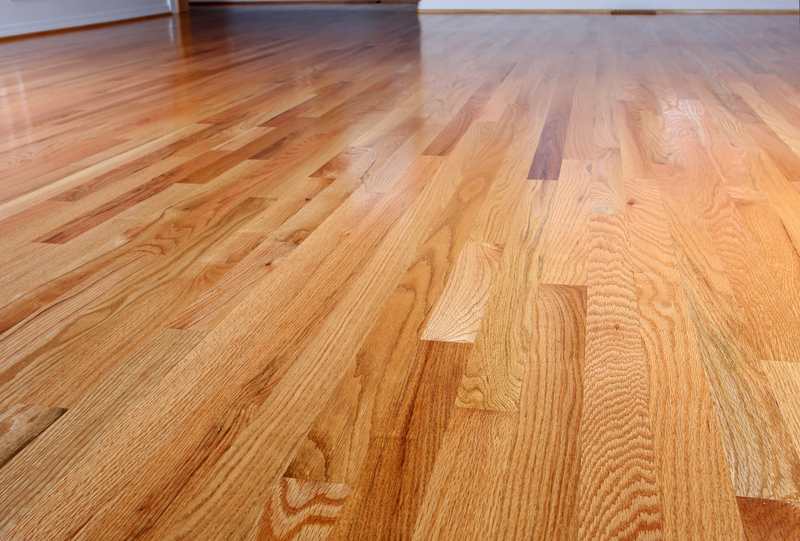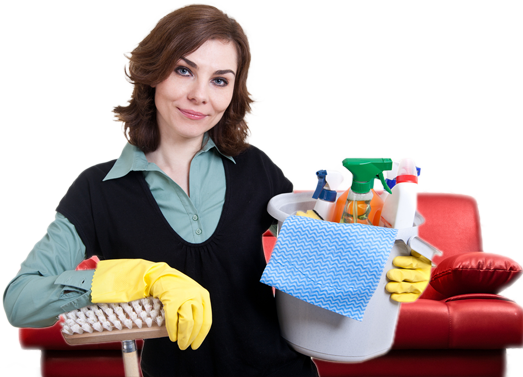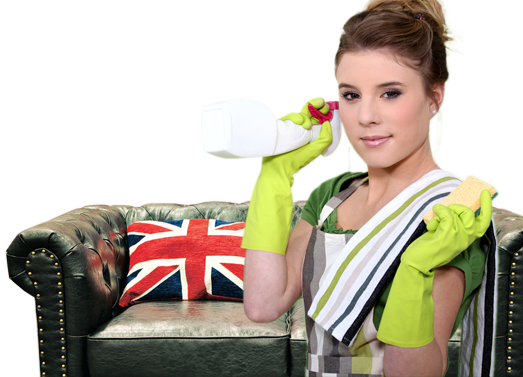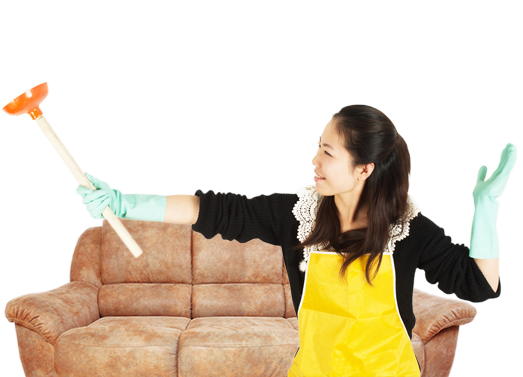Guide to End of Tenancy House Cleaning for Tenants
Posted on 03/09/2025
Guide to End of Tenancy House Cleaning for Tenants
Are you moving out of a rented property? If so, end of tenancy house cleaning is a crucial step you can't afford to overlook. As a tenant, it's your responsibility to leave the property spotless for the next occupants and to ensure the smooth return of your security deposit. This comprehensive guide will walk you through every stage of the process, sharing practical tips and expert advice on how to carry out a thorough final tenancy clean. Whether you're doing the job yourself or hiring professionals, this guide will help you leave your rented home in the best possible condition.
Why Is End of Tenancy Cleaning Important?
End of tenancy cleaning, also known as move-out cleaning or rental property cleaning, is more than just a courtesy. It is both a legal and financial obligation for tenants. Landlords and letting agents expect the property to be returned in the same condition as when you moved in (allowing for fair wear and tear). Failure to clean thoroughly can result in deposit deductions, disputes, or even extra cleaning charges.
- Protect your deposit: Most tenancy agreements stipulate that the property must be cleaned before you leave. A full clean helps ensure you get your deposit back in full.
- Fulfil contractual obligations: Leave the property according to your tenancy agreement's terms.
- Avoid conflicts: Handing over a clean property means fewer disputes with your landlord.
- Positive references: Landlords are more likely to provide a good reference if you leave the property spotless.

Key Areas to Focus on During End of Tenancy Cleaning
To deliver a professional standard tenancy clean, attention to detail is essential. Here are the main areas that need your attention:
- Kitchen
- Bathrooms
- Living areas
- Bedrooms
- Hallways and staircases
- Windows and doors
- Carpets and flooring
- Outdoor areas (if applicable)
Kitchen Deep Cleaning
The kitchen is often the toughest job during any end of tenancy cleaning for tenants. It's where grime, grease, and food waste accumulate most.
- Clean all surfaces: Worktops, shelves, tiles, splashbacks, cupboards (inside and out).
- Appliances: Oven cleaning is essential. Remove shelves and trays; soak and scrub clean. Clean the hob, extractor fans, and filters.
- Defrost and clean the fridge/freezer. Don't forget behind and underneath appliances.
- Microwave, dishwasher, and washing machine: clean inside and out, including seals and detergent drawers.
- Sinks: Remove limescale, and polish taps.
- Floors: Sweep and mop thoroughly.
- Bins: Empty and sanitize.
Bathroom End of Tenancy Cleaning
- Scrub toilets, sinks, baths, and showers meticulously, removing any limescale or mold.
- Clean mirrors, cabinets, shelves, and towel holders.
- Polish taps and showerheads.
- Wash and disinfect bathroom floors and tiles.
Living Areas and Bedrooms
- Dust and wipe all surfaces, including skirting boards, doors, handles, and light switches.
- Vacuum carpets, rugs, and upholstery. Consider professional carpet cleaning if heavily soiled.
- Clean inside wardrobes, drawers, and shelves.
- Remove any cobwebs from ceilings, corners, and lampshades.
- Polish mirrors and glass surfaces.
Windows, Doors, and Fixtures
- Clean windows inside and out where accessible.
- Wipe down window sills, frames, door frames, and doors.
- Dust blinds and wash curtains if required.
Floors and Carpets
- Sweep, vacuum, or mop every floor surface.
- Remove any stains or marks where possible.
- Consider hiring a professional tenancy cleaning service for stubborn carpet stains.
End of Tenancy Cleaning Checklist for Tenants
An organized checklist can ensure you don't miss anything during your end of tenancy property clean. Here's a room-by-room cleaning checklist for tenants:
General Areas
- Dust ceilings, light fittings, skirting boards, and corners.
- Wipe doors, handles, and switches.
- Vacuum or mop all floors and carpets.
- Clean all windows and window sills.
- Remove all rubbish and personal items.
Kitchen
- Clear out all cupboards and shelves, and wipe them inside and out.
- Clean oven, hob, extractor fan, fridge/freezer, microwave, dishwasher, and washing machine.
- Wipe worktops, splashbacks, tiles, and sinks.
- Disinfect the rubbish bin and surrounding area.
Bathrooms
- Scrub toilets, showers, sinks, baths, tiles, and floors.
- Clean and polish mirrors, taps, and showerheads.
- Wipe down bathroom cabinets and shelves.
Bedrooms and Living Rooms
- Dust all surfaces, shelves, and furniture.
- Clean inside cupboards and wardrobes.
- Vacuum upholstery and curtains.
Outdoor Areas (if applicable)
- Sweep patios, balconies, or driveways.
- Remove any rubbish or garden waste.
DIY vs. Professional End of Tenancy Cleaning
One of the big decisions for tenants is whether to tackle the job themselves or hire an end of tenancy cleaning company. Each option has pros and cons:
DIY End of Tenancy Cleaning
- Cost-effective: You'll only spend money on cleaning supplies.
- Full control: You know exactly what's been done.
- Time-consuming: A proper deep clean can take an entire day or more.
- Physical effort required: Moving furniture and scrubbing can be hard work.
- Risk of oversight: Missed spots could lead to deposit deductions.
Professional End of Tenancy Cleaning Services
- Expertise: Professionals are experienced and know what property managers require.
- Guarantee: Many companies offer a guarantee or re-clean policy to pass your final inspection.
- Saves time and effort: No need to spend your weekend cleaning.
- Additional cost: You'll pay for the convenience and expertise.
*Tip*: If you're considering a professional rental cleaning service, ask your landlord or letting agent if they have preferred providers or specific cleaning standards to meet.
How to Prepare for Your End of Tenancy Clean
Good preparation is the key to a successful move out cleaning. Here's how to set yourself up for cleaning success:
- Declutter and remove belongings: Move out all your personal possessions before cleaning. Cleaning an empty property is far quicker and more efficient.
- Choose your cleaning day: Plan to clean right after you move out, ideally before your final inspection.
- Gather supplies: Stock up on cleaning products, rubber gloves, sponges, cloths, mop, vacuum, buckets, and trash bags.
- Work from top to bottom: Always clean higher surfaces first so dust and debris fall where you'll vacuum or mop later.
- Ventilate: Open windows for better air quality and to help dry surfaces faster.
Common End of Tenancy Cleaning Mistakes to Avoid
Tenants often lose part or all of their deposit due to overlooked cleaning tasks. Avoid these common mistakes:
- Forgetting to clean behind and under furniture
- Missing inside appliances (ovens, fridges, dishwashers)
- Ignoring bathroom fixtures and tiles
- Leaving stains on carpets or walls untreated
- Overlooking light switches, plug sockets, and door handles
- Not removing cobwebs from ceilings and corners
- Leaving rubbish inside bins or outside the property
End of Tenancy Cleaning FAQ
How clean does my rental property need to be?
The property should be restored to the state it was in at the start of your tenancy. This should be thoroughly clean, with no dirt, dust, limescale, grease, or personal items left behind. Compare your work to your inventory check-in report for the required standard.
Do I have to hire a professional cleaning service?
Not always. You can do end of tenancy cleaning yourself, as long as the property meets the standard required. However, some landlords or agents may require professional cleaning--check your tenancy agreement for any specific clauses.
Will cleaning guarantee the return of my deposit?
A pristine clean is one of the main requirements for a full deposit return, but you should also check for damage, missing items, or outstanding bills. Keep evidence of your cleaning--photos, receipts, or reports from professional cleaners.
Tips for a Stress-Free End of Tenancy Clean
- Start early: Don't leave your final tenancy clean to the last minute. Plan ahead and allow enough time.
- Use the right products: Tough limescale remover for bathrooms, degreasers for the kitchen, and carpet shampoo where needed.
- Don't forget the small details: Skirting boards, light bulbs, radiators, door trims, and curtain rails all need attention.
- Check your inventory: Use your original check-in report to guide your cleaning and spot repairs.
- Communicate with your landlord: Confirm inspection times and clarify any requirements for end of lease cleaning.

What to Do if There's a Cleaning Dispute
If you find yourself in a disagreement with your landlord over the cleanliness of the property:
- Provide evidence: Present before and after photos and receipts for professional cleaning if used.
- Refer to your inventory: Compare the check-in and check-out reports.
- Negotiate calmly: Try to reach a mutual agreement; sometimes a re-clean or minor fix is enough.
- Use a deposit protection scheme: If no agreement is reached, you can raise a dispute through a third-party tenancy deposit protection scheme for impartial resolution.
Conclusion: Leave Your Rental Home Spotless
A thorough end of tenancy house cleaning is your final responsibility as a tenant. By taking a systematic approach and using this guide, you can leave the property shining--maximizing your chances of a full deposit return and a positive reference. Whether you choose to tackle the cleaning yourself or opt for a professional move-out cleaning service, attention to detail is key. Start early, stay organized, and don't let cleaning issues delay your move-out or put your deposit at risk. Happy moving!
Remember: A clean start for the next tenant is a clean slate for your own renting record. For more advice on tenancy tips and cleaning guides, keep following our blog!





